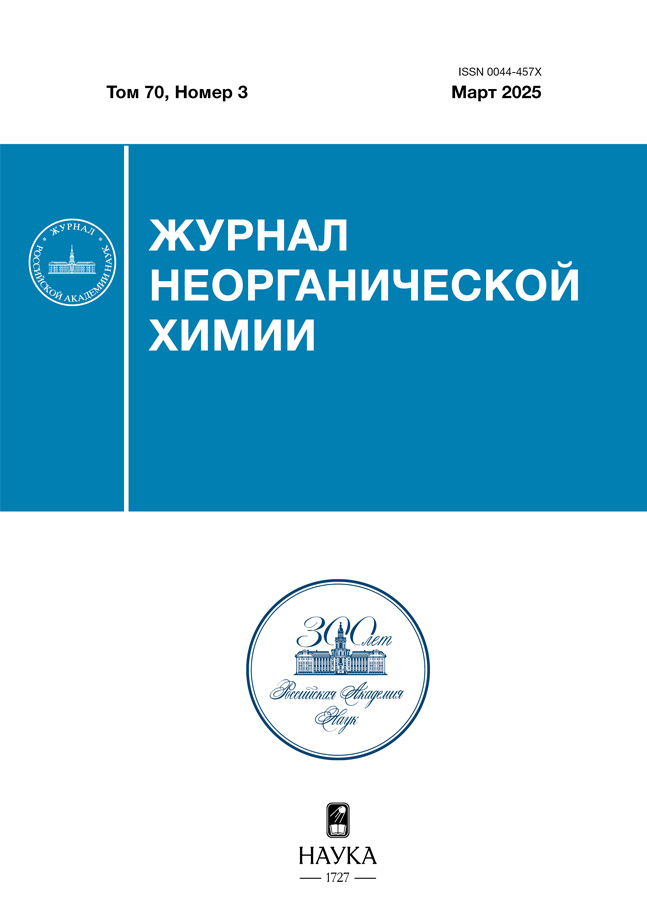The use of a li-ion battery recycling product for the synthesis of the manganese based max-phase
- Autores: Shichalin O.O.1,2, Kornakova Z.E.1,2, Ivanov N.P.2, Seroshtan A.I.1, Marmaza P.A.1, Barkhudarov K.V.2, Tsygankov D.K.2, Shramkov E.A.3,4, Likhachev I.A.3, Papynov E.K.2
-
Afiliações:
- Sakhalin State University
- Far Eastern Federal University
- National Research Center "Kurchatov Institute"
- Moscow Institute of Physics and Technology (National Research University)
- Edição: Volume 70, Nº 3 (2025)
- Páginas: 377-385
- Seção: СИНТЕЗ И СВОЙСТВА НЕОРГАНИЧЕСКИХ СОЕДИНЕНИЙ
- URL: https://journals.eco-vector.com/0044-457X/article/view/684986
- DOI: https://doi.org/10.31857/S0044457X25030093
- EDN: https://elibrary.ru/BAXFMF
- ID: 684986
Citar
Texto integral
Resumo
In recent years, with the growing popularity of electric vehicles and other battery-powered devices, there has been a significant increase in demand for lithium-ion batteries (LIBs). These batteries have become the main power source for most portable devices and electric vehicles, such as the Nissan Leaf. However, with the increase in LIB production and consumption, there is not only the question of ensuring their efficient production but also the need for environmentally safe recycling. The recycling process of used LIBs involves extracting valuable components such as lithium, cobalt, nickel, and manganese. Efficient recycling of cathode materials becomes particularly important as it allows both the reuse of these metals in new battery production and reduces the need for resource mining. Manganese (Mn), which can be extracted during LIB recycling, not only plays a crucial role in battery production but can also serve as a basis for synthesizing new materials, such as the Mn3AlC MAX phase. Manganese MAX phases represent a class of two-dimensional materials that are attracting increasing attention from researchers due to their unique properties. Thus, lithium-ion battery recycling not only solves the waste disposal problem but also creates opportunities for developing new materials.
Palavras-chave
Texto integral
Sobre autores
O. Shichalin
Sakhalin State University; Far Eastern Federal University
Autor responsável pela correspondência
Email: oleg_shich@mail.ru
Rússia, Yuzhno-Sakhalinsk; Vladivostok
Z. Kornakova
Sakhalin State University; Far Eastern Federal University
Email: oleg_shich@mail.ru
Rússia, Yuzhno-Sakhalinsk; Yuzhno-Sakhalinsk
N. Ivanov
Far Eastern Federal University
Email: oleg_shich@mail.ru
Rússia, Vladivostok
A. Seroshtan
Sakhalin State University
Email: oleg_shich@mail.ru
Rússia, Yuzhno-Sakhalinsk
P. Marmaza
Sakhalin State University
Email: oleg_shich@mail.ru
Rússia, Yuzhno-Sakhalinsk
K. Barkhudarov
Far Eastern Federal University
Email: oleg_shich@mail.ru
Rússia, Far Eastern Federal University
D. Tsygankov
Far Eastern Federal University
Email: oleg_shich@mail.ru
Rússia, Vladivostok
E. Shramkov
National Research Center "Kurchatov Institute"; Moscow Institute of Physics and Technology (National Research University)
Email: oleg_shich@mail.ru
Rússia, Moscow; Dolgoprudny
I. Likhachev
National Research Center "Kurchatov Institute"
Email: oleg_shich@mail.ru
Rússia, Moscow
E. Papynov
Far Eastern Federal University
Email: oleg_shich@mail.ru
Rússia, Vladivostok
Bibliografia
- Zhao P., Li Y., Wang X. et al. // Separation and Purification Technology. 2025. V. 357. P. 129988. https://doi.org/10.1016/j.seppur.2024.129988.
- Fan Х., Song С., Lu X. et al. // J. Alloys. Compd. 2021. V. 863. P. 158775. https://doi.org/10.1016/j.jallcom.2021.158775
- Li P., Luo S., Zhang L. et al. // J. Energy Chem. 2024. V. 89. P. 144. https://doi.org/10.1016/j.jechem.2023.10.012
- Golmohammadzadeh R., Faraji F., Jong B. et al. // Renew. Sustain. Energy Rev. 2022. V. 159. Р. 112202. https://doi.org/10.1016/j.rser.2022.112202
- Xu C., Dai Q., Gaines L. et al. // Commun. Mater. 2020. V. 1. Р. 99. https://doi.org/10.1038/s43246-020-00095-x
- Wang J., Liang Z., Zhao Y. et al. // Energy S. 2022. V. 45. P. 768. https://doi.org/10.1016/j.ensm.2021.12.013
- Lin J., Zhang X., Fan E. // Energ. Environ. Sci. 2023. V. 16. P. 745. https://doi.org/10.1039/d2ee03257k
- Zhang B., Chen S., Yang L. et al. // ACS Nano. 2024. V. 18. P. 23773. https://doi.org/10.1021/acsnano.4c08968
- Medvedeva A.E., Pechen L.S., Makhonina E.V. et al. // Russ. J. Inorg. Chem. 2019. V. 64. P. 829. https://doi.org/10.1134/S003602361907012X
- Xing C., Meng Y., Linfeng Fei F. // Energy Storage Materials. 2024. V. 71. P. 103636. https://doi.org/10.1016/j.ensm.2024.103636
- Qu X., Zhang B., Zhao J. et al. // Green Chem. 2023. V. 25. P. 29925. https://doi.org/10.1039/d2gc04620b
- Belmesov A., Glukh A., Kayumo R. et al. // Coatings. 2023. V. 13. P. 2075. https://doi.org/10.3390/coatings13122075
- Belmesov A., Glukhov A., Tsvetkov M. et al. // J. Comp. Cos. Sci. V. 7. P.454. https://doi.org/10.3390/jcs7110454
- Buravlev I., Vornovskikh A., Shichalin O. et al. // Ceram. Int. V. 50. P. 14445. https://doi.org/10.1016/j.ceramint.2024.01.357
- Wang J.X., Ma J., Zhuang Z.F. et al. // Chem. Rev. 2024. V. 124. P. 2839. https://doi.org/10.1021/acs.chemrev.3c00884
- Zhang X., Li L., Fan E. et al. // Chem. Soc. Rev. 2018. V. 47. P. 7239. https://doi.org/10.1039/c8cs00297e
- Yu W., Guo Y., Shang Z. et al. // eTransportation. 2022. V. 11. P. 100155. https://doi.org/10.1016/j.etran.2022.100155
- Gao Z., Huang M., Yang L. et al. // J. Energy Chem.. 2023. V. 78. P. 253. https://doi.org/10.1016/j.jechem.2022.11.061
- Shichalin O.O., Ivanov N.P., Seroshtan A.I. et al. // Ceramics International. 2024. V. 50. № 24. P. 53120. https://doi.org/10.1016/j.ceramint.2024.10.161
- Mahmood A., Gill R., Raffi M. et al. // Diamond Related Mater. 2023. V. 303. P. 110387. https://doi.org/10.1016/j.diamond.2023.110387
- Kalmár J., Karlický F. // Phys. Chem. Chem. Phys. 2024. V. 29. https://doi.org/10.1039/D4CP02264E
- Eklund P., Rosen J., Persson P. // J. Phys. D: Appl. Phys. 2017. P. 113001. https://doi.org/10.1088/1361-6463/aa57bc
- Jiahe P., Xingzhu C., Wee-Jun O. et al. // Chem. 2019. V. 5. № 1. P. 18. https://doi.org/10.1016/j.chempr.2018.08.037
- Yang X., Zhang Y., Meng Q. et al. // RSC Adv. 2021. V. 11. P. 268. https://doi.org/10.1039/d0ra09297e
- Eraky M.S., El-Sadek M., Shenouda A.Y. et al. // Monatshefte fur Chemie – Chem. Monthly. 2024. V. 155. P. 289. https://doi.org/10.1007/s00706-024-03173-9
Arquivos suplementares

















